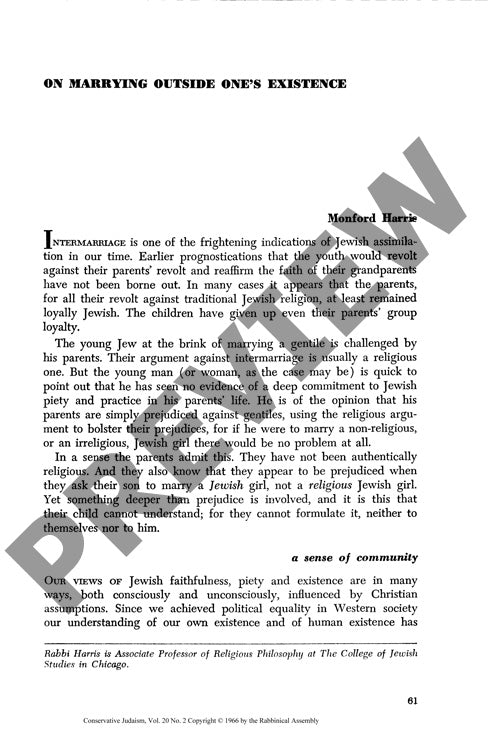On Marrying Outside Ones Existence
Couldn't load pickup availability
Jewish opposition to intermarriage stems from a profound commitment to communal survival and intergenerational continuity rather than mere religious prejudice or orthodoxy. Through comparative religious analysis and theological-sociological frameworks, fundamental differences emerge between Christian individualistic approaches to faith and Jewish communal covenantal existence. While Christian identity centers on personal religious practice, Jewish identity encompasses a broader historical witness and communal obligation that persists even among secular Jews. The concept of *shalshelet hadorot* - the chain of generations - reveals why intermarriage represents not simply marrying outside one's faith but "marrying outside one's existence." This metaphysical threat to Jewish historical continuity explains why even highly assimilated Jewish parents experience deep concern over intermarriage. The research demonstrates that such opposition transcends conventional religious considerations, instead reflecting an existential imperative to maintain the fundamental links binding Jewish generations and preserving their role as covenantal witnesses through time. These dynamics distinguish Jewish responses to intermarriage from other faith traditions and illuminate the complex interplay between religious identity, communal survival, and intergenerational continuity in contemporary society.

More Information
-
Physical Description
-
Publication Information
Published 1966
ISBN
-
Publication Credits
Monford Harris

